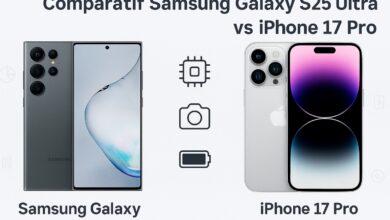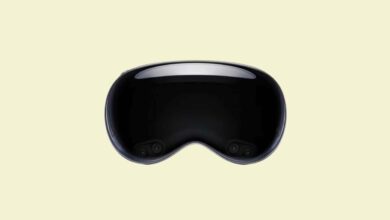The Nintendo Switch isn’t unlike a NASA spacecraft, in that nearly every part of it has been specially designed to pull double or even triple duty. The system’s modular design means that it has to function as a traditional home console, a portable system, and stand-alone tablet with wireless controllers. Getting a piece of hardware to do that much while also making it easy to use and understand would be an engineering miracle, and although Nintendo has come close in some regards, it has fallen well short in others. Overall, the Switch is an attractive and powerful but oversized portable gaming system that struggles to be a convincing or reliable home console.
Keep in mind that this review is still tentative, as we haven’t yet had the opportunity to test the Switch’s online capabilities, the eShop store, or a wide variety of games that use the individual Joy-Con as stand-alone controllers. Those functions and others (such as SD card compatibility) won’t be enabled until the launch-day patch, which we’re expecting to see either late Thursday or early Friday. We plan to have this review finalized in the following days.
The first thing that struck me about the Switch is the overall quality of its look and feel. Regardless of whether you go for the neon blue and orange set or the more subtle gray pair, the handsome matte finish of the two included Joy-Con feels almost silken, begging to be touched. The console itself – the central tablet piece – is almost alarmingly small and thin when placed next to the PlayStation 4, Xbox One, or even the Wii U, but its mostly metal and glass construction gives it a sturdy, substantial heft. At the same time, it’s still under a pound with both Joy-Con attached, making it comfortable to hold for long periods. (See the full dimensions and weight breakdown in our Nintendo Switch Wiki.) Even small details like the way the Joy-Con snap into place on the included Joy-Con Grip to form something resembling a conventional controller convey a premium feeling – the kind of gadget lust that has eluded Nintendo for generations now.

Nintendo Switch Review In Progress
The Switch is a jack of many trades, but a master of none.
The Nintendo Switch isn’t unlike a NASA spacecraft, in that nearly every part of it has been specially designed to pull double or even triple duty. The system’s modular design means that it has to function as a traditional home console, a portable system, and stand-alone tablet with wireless controllers. Getting a piece of hardware to do that much while also making it easy to use and understand would be an engineering miracle, and although Nintendo has come close in some regards, it has fallen well short in others. Overall, the Switch is an attractive and powerful but oversized portable gaming system that struggles to be a convincing or reliable home console.
Keep in mind that this review is still tentative, as we haven’t yet had the opportunity to test the Switch’s online capabilities, the eShop store, or a wide variety of games that use the individual Joy-Con as stand-alone controllers. Those functions and others (such as SD card compatibility) won’t be enabled until the launch-day patch, which we’re expecting to see either late Thursday or early Friday. We plan to have this review finalized in the following days.
The first thing that struck me about the Switch is the overall quality of its look and feel. Regardless of whether you go for the neon blue and orange set or the more subtle gray pair, the handsome matte finish of the two included Joy-Con feels almost silken, begging to be touched. The console itself – the central tablet piece – is almost alarmingly small and thin when placed next to the PlayStation 4, Xbox One, or even the Wii U, but its mostly metal and glass construction gives it a sturdy, substantial heft. At the same time, it’s still under a pound with both Joy-Con attached, making it comfortable to hold for long periods. (See the full dimensions and weight breakdown in our Nintendo Switch Wiki.) Even small details like the way the Joy-Con snap into place on the included Joy-Con Grip to form something resembling a conventional controller convey a premium feeling – the kind of gadget lust that has eluded Nintendo for generations now.
The Switch’s dock and the Joy-Con Grip are two simple pieces of plastic that allow this handheld to dress up like a home console. The dock itself is as barebones as can be; it’s essentially just a combination HDMI and USB passthrough/charging station. It definitely works as advertised: within a couple of seconds of dropping the tablet onto the dock, the picture transfers right over to the TV, and after detaching the Joy-Con (or using a separately purchased Pro Controller) you’re ready to play. The transition back to handheld mode is just as seamless, which is definitely impressive. Even the time from startup to actually launching and playing a game is surprisingly short, and resuming from sleep is nearly instantaneous.
The Grip completes the Switch’s console transformation, housing the left and right Joy-Con to form what feels like the most traditional controller Nintendo has made since the Super Nintendo. This Voltron-esque configuration won’t be beating Sony’s Dual Shock 4 any time soon, but it’s far more comfortable and functional than I imagined it would be from just looking at it. The smallish face buttons are sufficiently clicky and easy to hit, but the lack of a traditional D-pad or full-sized analog triggers will put it at a disadvantage for certain types of games. The Minus button (think Select or Back) is very oddly placed, though: it’s so small and so close to the left analog stick that I can barely hit the button without nudging the stick. Speaking of the analog sticks, they work well enough, but are notably limited in range of motion compared to competitors’ controllers. It’s easy enough to adjust to these tiny quirks, but even once I did, the Joy-Con never felt quite like home the way a great controller should. The other notable limitation of the Grip is that there’s no way to charge the Joy-Con while they’re attached – if their charge runs out (after what Nintendo claims is 20 hours, but we’ve yet to successfully run them down) you must re-attach them to the tablet to charge them. Alternatively, you can buy the $30 Joy-Con Charging Grip.







